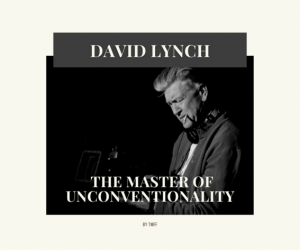Music in film is always an interesting discussion topic, I believe, simply because of the fact that there’s no right or wrong answers. This is such a complex matter, that encompasses so many variables, moderators and mediators alike, and thus only makes intuitive sense to be analysed only on a case by case basis. And, naturally, it’s ultimately a matter of taste as much as context and placement. Should film music be striking and noticeable, thus becoming imprinted in your short-term memory and therefore prompting you to go on YouTube and do a search immediately as the film ends? Or should it be so finely fitted within the visual side of the film itself, complementing it to such a degree that it becomes virtually unnoticeable at an individual level? As I said, there’s no right or wrong answer.
One method of differentiating between types and situations of music use is labeling it into two overarching categories: homophonic and polyphonic. The former category implies the existence of a harmonious fit between the music and the visuals on display. Therefore, it basically complements the scenes it accompanies, creating a synergy that leads to the joint perception of both as a separate, united entity.
When it comes to polyphonic music, however, this harmonious fit disappears, and instead, a contrast is created between the visuals and the audio part. Naturally, this becomes more readily apparent when encountered, because it defies expectations of what an unnoticeable fit would be – as we know, we rarely pay much attention to things that we expect to find, see or hear on a usual basis, but instead notice the actions which our mind labels as discrepancies. The great thing about polyphonic music is that it can easily change the whole significance of the same scene, depending on what kind of tune creates the contrast. For instance, a scene of extreme violence which unfolds as it is accompanied by a heavy metal theme would convey a different significance and set of emotions than it would if put together with a happy sounding kids’ song, or an opera snippet.
Then we arrive at another category, which is no music at all. I remember that a couple of years ago, I had recommended No Country for Old Men to my mum, and after she watched it, I asked for her opinion. She said that she had really enjoyed it, but found the atmosphere so tense and pressing, that at times it became hard to watch – and not because of losing interest, but simply because of how it made her feel. I immediately associated this with the complete lack of music of that film. Interestingly enough, she hadn’t noticed the fact itself, but merely the result on how it made her feel. No music is definitely a choice, and a great one at that, especially if the resulting feelings and dispositions invoked in the audience are aligned with the purpose of the film itself.
Since we’re talking about a topic that deals exclusively with how we hear things and what things we should hear or expect to hear in different circumstances, I feel that further exploration of this topic should be pursued more vividly, through actual examples. Therefore, we’ll keep this entry brief, and complement the article with this wonderful short audiovisual essay on music in film, produced by students from the Film and Media Studies department of the University of Groningen, The Netherlands. Happy listening!
















